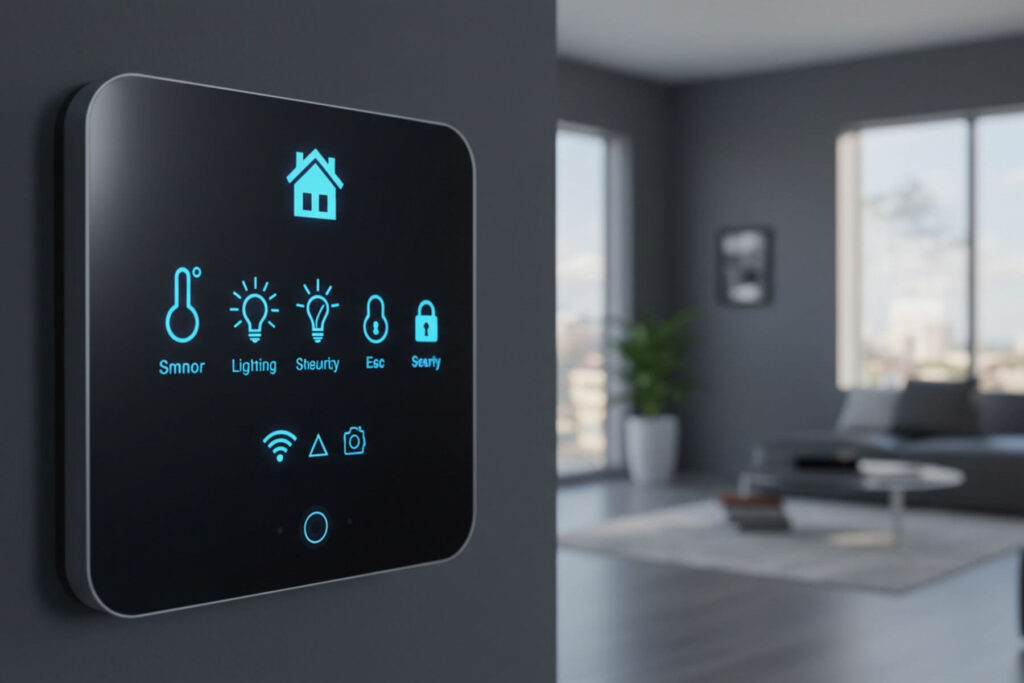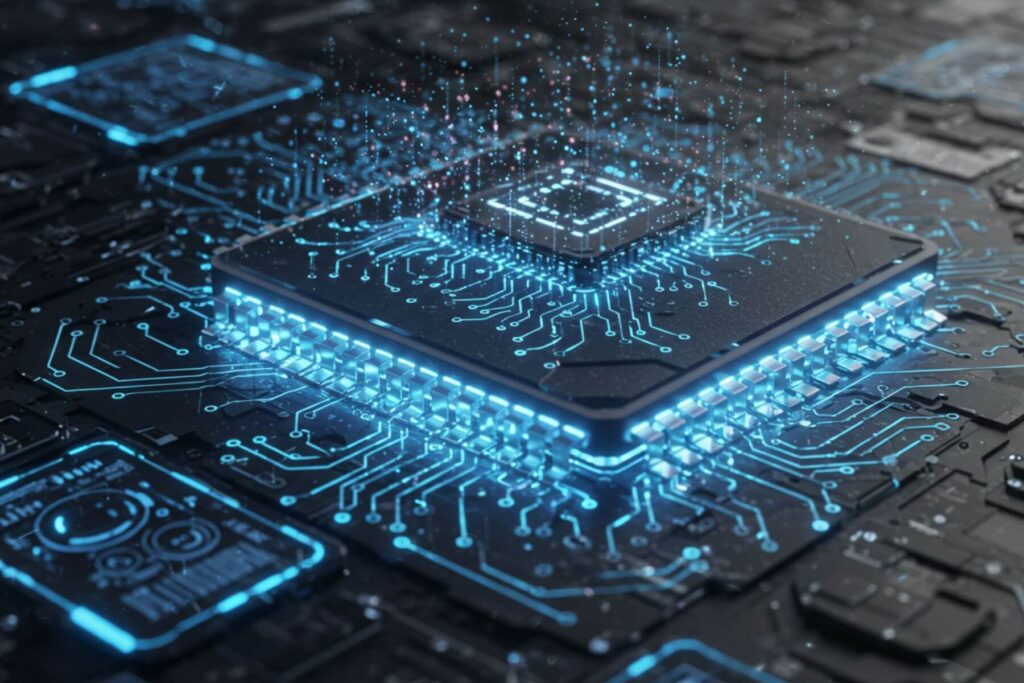Artificial intelligence is changing the way we live at home. In 2025, smart homes are becoming smarter than ever before. Thanks to the power of AI, homes can now respond to our needs, learn our habits, and even help keep us safe and healthy. These advanced systems work quietly in the background, offering convenience, efficiency, and peace of mind without needing constant attention.
Whether you’re just starting to explore smart home devices or already have a few, this article will walk you through the 10 most exciting AI-powered innovations making life easier in 2025.
1. AI-powered personal home assistants that understand you better
In 2025, virtual assistants like Alexa, Google Assistant, and Siri are no longer just voice-activated tools. They are now deeply integrated into smart homes, using AI to understand your tone, habits, and even your mood. These assistants can now learn from your routines. If you usually turn on soft lighting and play relaxing music after work, your AI assistant might start doing that automatically without being asked. These systems can also hold more natural conversations and remember personal preferences across multiple devices in your home.
What makes this powerful is that it goes beyond simple commands. AI assistants now act more like intuitive household managers, anticipating needs and offering helpful suggestions in real time.
2. Intelligent climate control that adapts in real time
Gone are the days of manually adjusting the thermostat. In 2025, AI-enabled climate control systems can detect when you’re at home, how many people are in the room, and even your personal temperature preferences at different times of the day. These systems don’t just respond to your commands; they predict your comfort needs before you even notice them.
AI can now use real-time weather data, monitor room occupancy, and learn from past behavior to automatically adjust heating, cooling, and humidity. This leads to better comfort and major energy savings. Some smart thermostats even analyze your electricity rates and adjust your system to save money during peak hours.
3. AI-driven smart security that knows what’s normal
Smart home security in 2025 has taken a huge leap forward with AI-powered surveillance. Modern security systems no longer just record footage. They now recognize faces, detect unusual behavior, and differentiate between harmless motion and real threats.
For example, an AI security system can alert you if it detects someone lingering near your door at odd hours, but it won’t trigger false alarms for a neighbor walking by. These systems also integrate with your smart door locks, lights, and even drones that patrol your property. Some AI security platforms even simulate human presence when you’re away, by turning on lights or playing sounds to deter potential intruders.
4. AI in smart kitchens for better cooking and health
The kitchen is becoming one of the smartest areas in the home. AI-powered appliances in 2025 can now suggest recipes based on what you have in your fridge, your dietary goals, and even your past cooking preferences. Smart ovens and stoves are now equipped with AI sensors that prevent burning, undercooking, or overcooking.
Refrigerators can track expiration dates, reorder groceries, and suggest meal plans. Some AI systems are also connected to health-tracking apps, so they adjust meal recommendations based on your fitness goals or medical conditions. Cooking at home has never been this easy, healthy, or enjoyable.
5. Predictive maintenance to fix problems before they happen
AI has made it possible for your home to alert you about problems before they turn into costly repairs. In 2025, smart home systems monitor your plumbing, electricity, and appliances for early signs of wear or failure. For example, AI can detect a leak forming behind a wall or a water heater that’s running less efficiently.
These systems analyze data trends and performance history, then notify you when something needs attention. Some even schedule service calls or order replacement parts automatically. Predictive maintenance not only saves time and money but also prevents emergencies that could damage your home.
6. Personalized lighting that matches your mood and schedule
Lighting in 2025 is no longer just on or off. AI-powered smart lights learn your daily rhythm, including when you wake up, work, relax, and go to bed. They adjust brightness and color temperature to match the time of day and your current activity.
If you’re working, lights can shift to a cooler, brighter setting for better focus. In the evening, the lights might soften automatically to help you wind down. Some systems are even synced with your health data, adapting lighting based on your stress levels or energy levels.
This innovation not only enhances comfort but also supports better sleep and mental well-being.
7. AI-powered cleaning robots that learn your home
Cleaning robots in 2025 are much smarter than the early models. Today’s AI-powered vacuum cleaners and mops create detailed maps of your home, remember the layout, and adapt to changes. If you move furniture or add a rug, the robot adjusts its path automatically.
Advanced models can recognize specific types of dirt, adjust suction levels, and even detect spills to clean them immediately. Some robots now connect with your home’s schedule. For example, they’ll clean when you leave for work or after your kids are done playing in a certain room.
These cleaning assistants save time and keep your home spotless without any effort on your part.
8. AI-integrated home entertainment that matches your mood
Entertainment systems are getting a personal touch thanks to AI. In 2025, smart TVs, speakers, and home theaters can recommend shows, movies, or music based on your mood, voice tone, and past preferences. They don’t just rely on what you’ve watched before; they factor in what day it is, who’s at home, and what you might be feeling.
Some systems can even switch to a relaxing playlist and dim the lights if you seem stressed. If it’s movie night, your home theater system may prepare the perfect environment with the right lighting, audio, and temperature, all powered by AI.
This kind of personalized entertainment transforms passive viewing into a tailored experience.
9. AI in smart bathrooms for health and comfort
AI is making its way into the bathroom too. In 2025, smart mirrors can analyze your face to give skincare tips or check for health signs like dehydration or stress. Some toilets now analyze waste to monitor hydration, nutrition, and even detect early signs of illness.
Shower systems powered by AI remember your preferred water temperature, pressure, and duration. They can also adjust based on your sleep or workout data, helping you feel refreshed or relaxed depending on your needs.
These features make your daily routines more personal and health-focused, creating a spa-like experience every day.
10. Centralized AI hubs that control everything seamlessly
Perhaps the biggest innovation in 2025 is the move toward a centralized AI hub that connects every smart device in your home. These hubs learn how each device is used, communicate between platforms, and coordinate responses without requiring your input.
For instance, if your AI hub notices that your alarm went off late, it might turn on your coffee machine, adjust your schedule, and delay your thermostat activation. If you’re leaving home, it can lock the doors, adjust the climate, turn off unnecessary lights, and activate security all at once.
These all-in-one systems are making the dream of fully autonomous smart homes a reality.
Bottom line
AI is no longer a future concept. It’s quietly working inside millions of homes in 2025, making everyday life easier, safer, and more enjoyable. From intelligent assistants to predictive maintenance and mood-based lighting, smart homes have become deeply personalized environments that respond to your lifestyle in ways we couldn’t have imagined just a few years ago.
As these innovations continue to evolve, our homes will not just be places where we live, they’ll be active partners in how we live.


